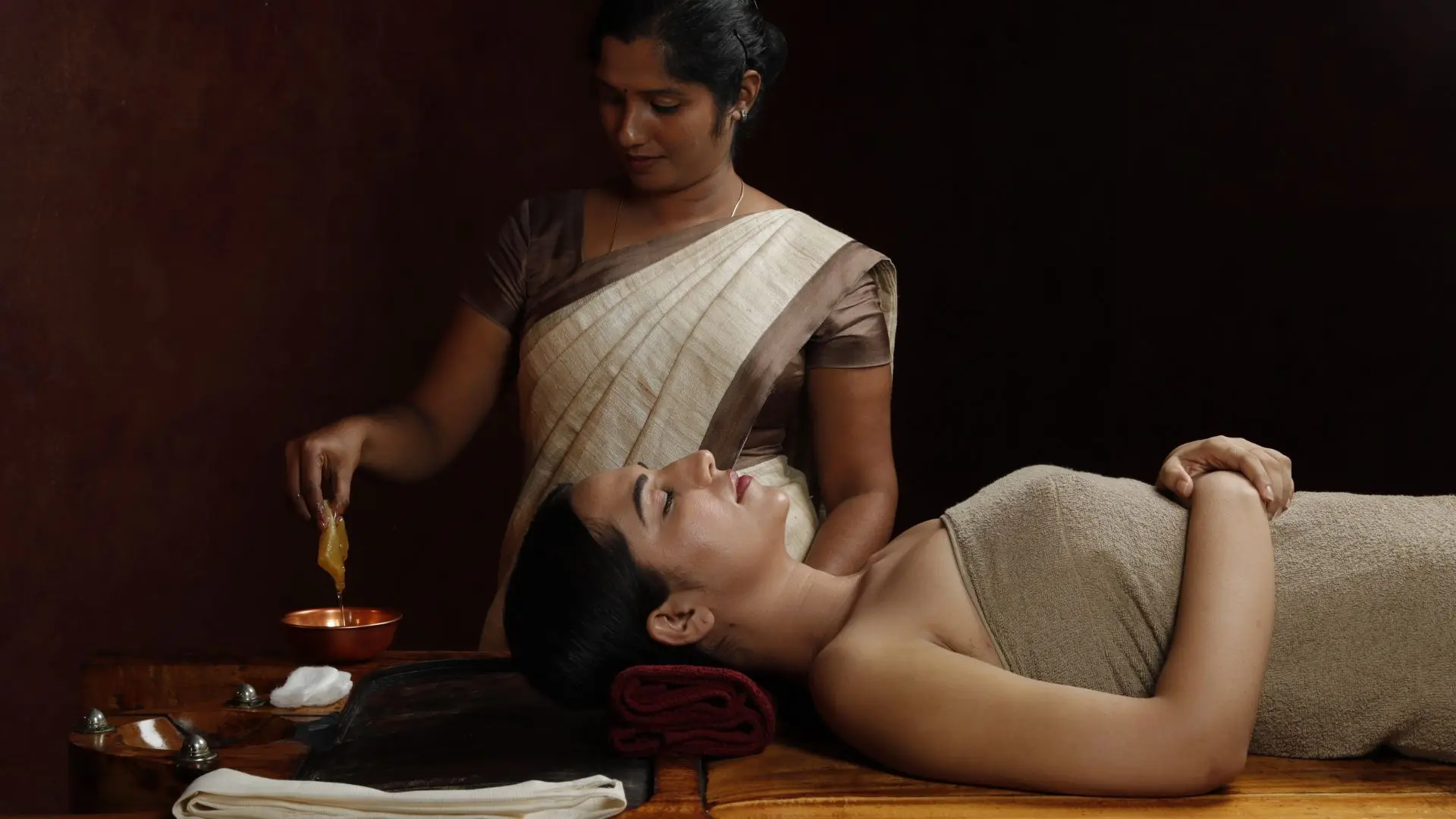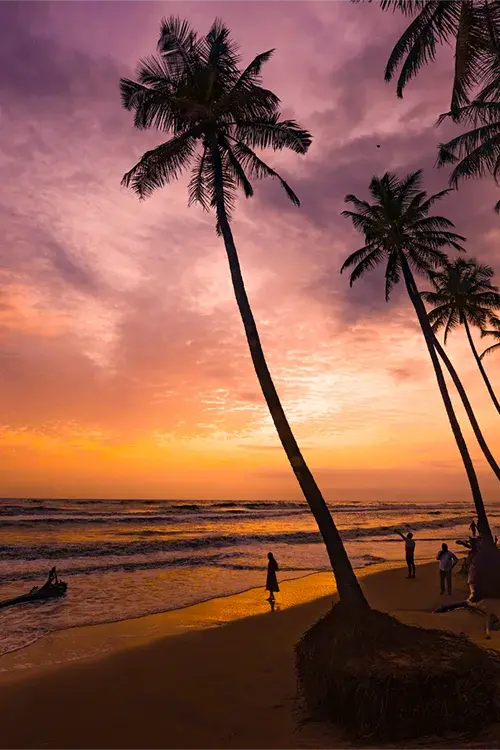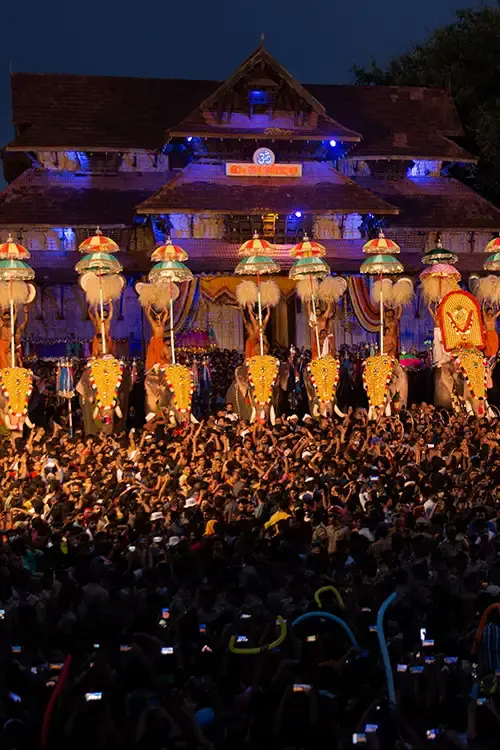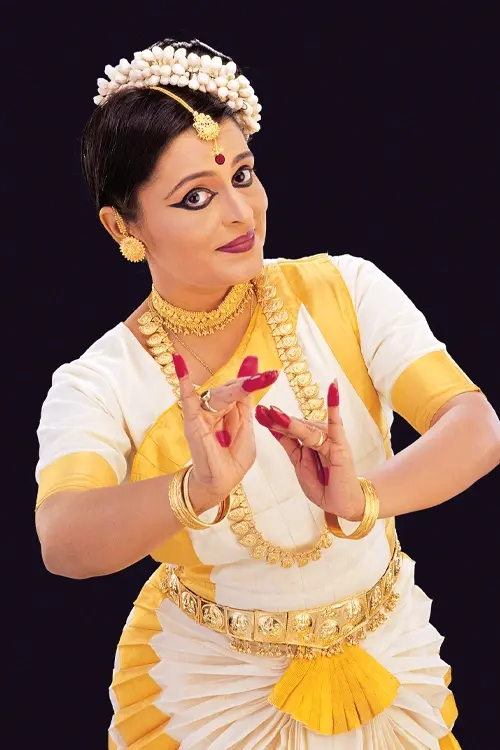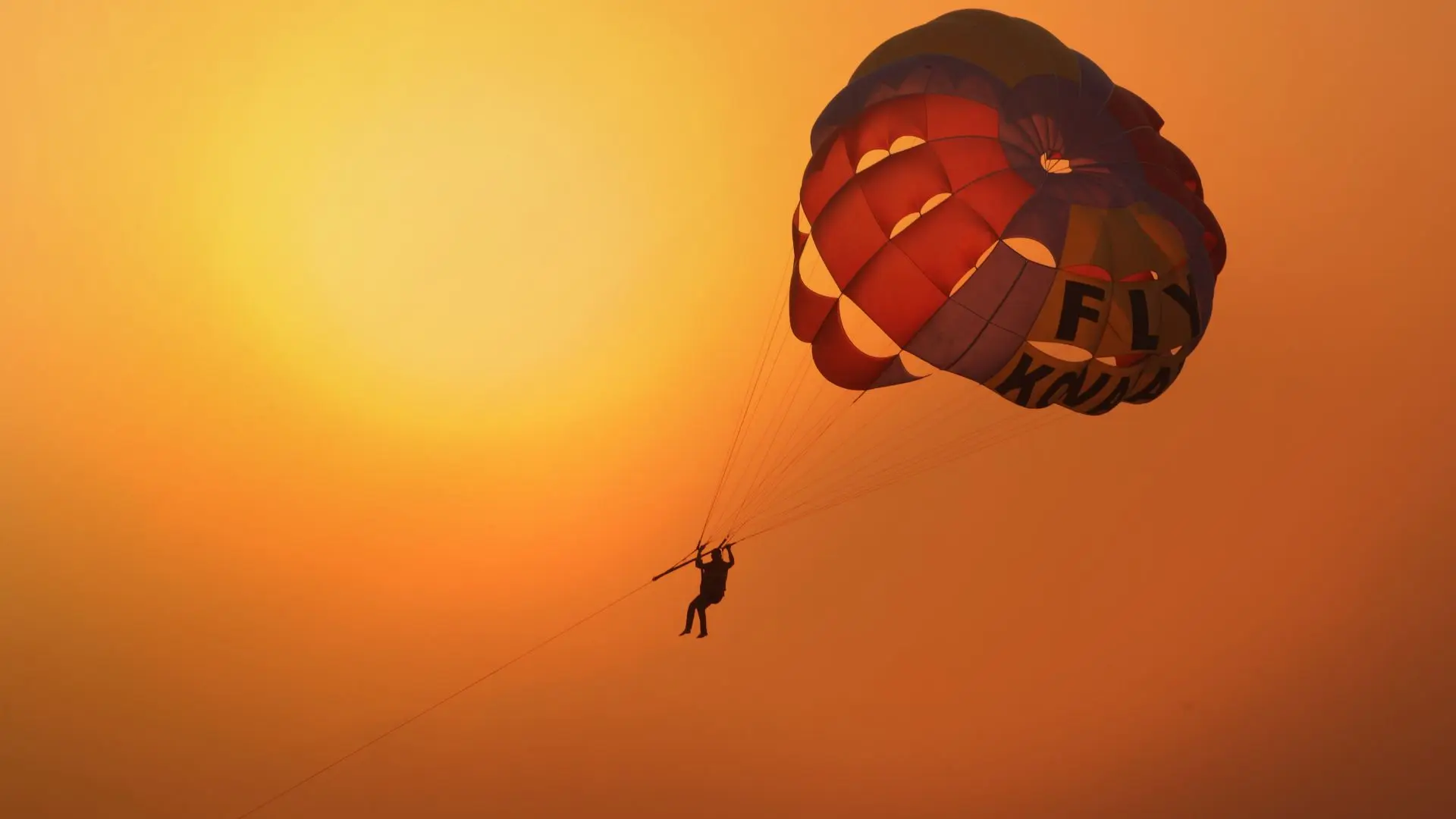Enchanting Kerala
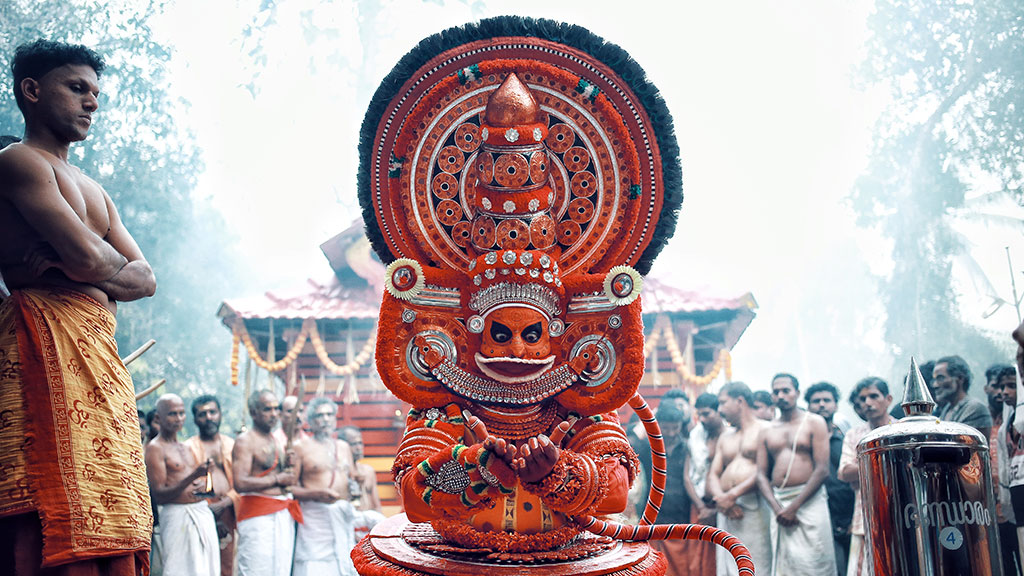
Theyyam
Magnificent costumes, ornate facial make-up and a medley of colours mark Theyyam performers. A ritual art form popular in northern Kerala, Theyyam is performed to the accompaniment of traditional musical instruments like drums, conches, utukku, etc. Songs are also sung during the performances which are called thottam. The resplendent costume is one of the most defining features of Theyyam. Colours like red, orange, yellow, black and white are used. Parunthuvaal Ezhuthu and Anchupulli Ezhuthu are the two types of body painting used in Theyyam.
As for face painting, praakezhuthu, sankezhuthu, naagam thathal ezhuthu and varezhuthu are used. The headgear is called mudi. It is believed that around 400 types of Theyyam are prevalent. The performances are done to pay obeisance to the deity by singing songs. The performer is called Kolam. Theyyam is also known as Thira, Thirayattam and Kaliyattam. Performers belong to different communities like Vannan, Malayan, Velan, Anjottan, Kopalan, Mavilan, Kolathari etc. The performer leads a life of abstinence for two weeks prior to the ritual. Theyyam is derived from the Sanskrit word ‘Daivam` which refers to a Hindu God, goddess or a force of Nature.
In the shrines of Malabar, Theyyam performances are annually held from December to April, especially in districts like Kannur and Kasaragod. Some of the most famous Theyyam performances are held at Karivallor, Nileshwaram, Kurumathoor, Cherukunnu, Ezhom and Kunnathoorpadi.
Contact:
District Tourism Promotion Council (DTPC)
Kasaragod
Ph: +91 499 425 6450, +91 85471 62679
Email: info@dtpckasaragod.com
